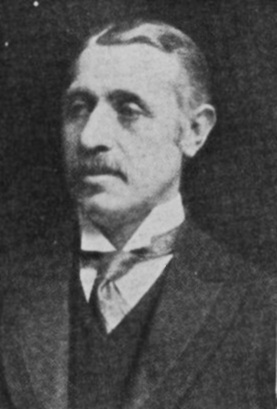Richard Cherry facts for kids
Richard Robert Cherry (born March 19, 1859 – died February 10, 1923) was an important Irish politician and judge. He held several high-ranking positions in the legal system. From 1905 to 1909, he was the Attorney-General for Ireland, which is like the chief lawyer for the government. Later, he became a judge in the Irish Court of Appeal and then the Lord Chief Justice of the King's Bench in Ireland from 1913 to 1916. He was also a member of the Liberal Party and was elected as a Member of Parliament (MP) for Liverpool Exchange in 1906.
Cherry wrote several books on law, including Lectures on the Growth of Criminal Law in Ancient Communities in 1890. He also wrote a very important book about Irish land laws. He was the president of the Statistical and Social Inquiry Society of Ireland from 1908 to 1911.
Contents
Early Life and School
Richard Cherry was born in Waterford, Ireland. His father, Robert William Cherry, was a lawyer. His family came from France and were Huguenots, a group of French Protestants.
He went to Trinity College Dublin, a famous university. While there, he was very active. He was the leader of the College Historical Society and the secretary of the University Philosophical Society.
His Career in Law and Politics
In 1889, Cherry became a professor at Trinity College Dublin, teaching about criminal and constitutional law. He also published two books on criminal law. He became a lawyer in 1881 and a Queen's Counsel (a senior lawyer) in 1896.
His family believed that his strong disagreement with the Boer War might have slowed down his career. However, this did not stop him from becoming the Attorney-General for Ireland in 1905. The next year, he was elected to the House of Commons, which is part of the UK Parliament.
In 1909, he became a judge. People said he wanted to be a judge because his work as a government lawyer was very demanding. He might have already been having health issues, though a serious illness was diagnosed later. Even with his health problems, he was promoted to Lord Chief Justice. He served for three years before retiring due to his health and because the government wanted to promote another judge, James Campbell. After the Easter Rising, a period of big changes in Ireland, he briefly served as a Lord Justice of Ireland, with special powers to help govern.
Even in retirement, Cherry stayed active as much as his health allowed. He spent time at his summer house in Greystones, County Wicklow, and his home in St. Stephen's Green, Dublin, where he passed away. He married Mary Cooper in 1886. Their daughter, Mary, wrote a book about her father in 1924.
A Notable Legal Case
As Attorney-General, Richard Cherry was involved in a well-known case about Matthias Bodkin. Mr. Bodkin was a lawyer and journalist who was appointed as a judge. However, his appointment was questioned because some argued he wasn't a "practising barrister" as required by law. The case was eventually settled.
How People Saw Him
Maurice Healy, a writer who knew Cherry from court, thought highly of his law textbooks. He described Cherry as a polite person, which was a good quality at a time when some Irish judges were known for being rude.
More recently, another expert named Hogan has given a more positive view of Cherry's career. Hogan believes that Cherry's quick rise in his profession shows he had great legal skills. He also said that Cherry's speeches and judgments show he was intelligent and had original ideas. Hogan agreed that Cherry might not have been the most outstanding judge, but he noted that Cherry's longer judgments, especially those about land law, were of very high quality. Cherry was known as an expert in land law.
Personal Interests
Richard Cherry was very skilled at bellringing, which is the art of ringing church bells in a specific pattern. In 1895, he helped start the Irish Association of Change Ringers with Gabriel Lindoff and Digby Scott. He soon became the president of this group.
In 1909, Cherry also gave two new bells to St. Patrick's Cathedral, Dublin. This made it the first church in Ireland to have twelve bells. He was also part of the first full "peal" (a long sequence of ringing all the bells) on these twelve bells. This was believed to be the first time a peal on twelve bells was rung outside of England.


